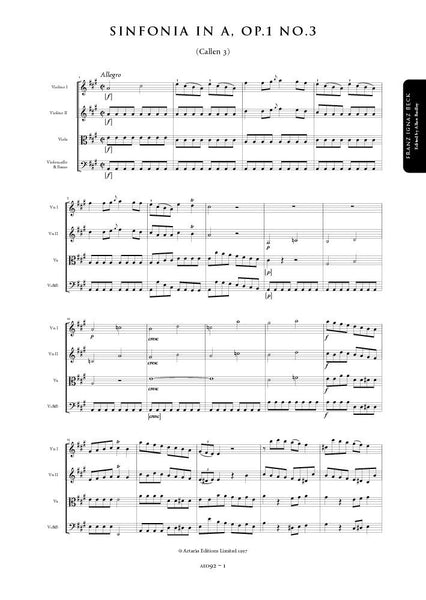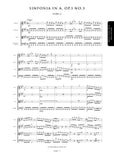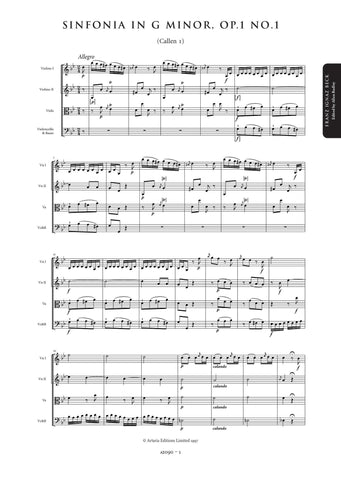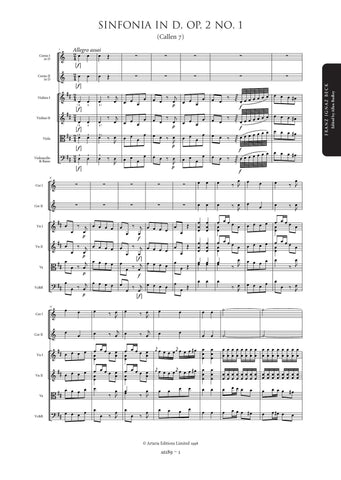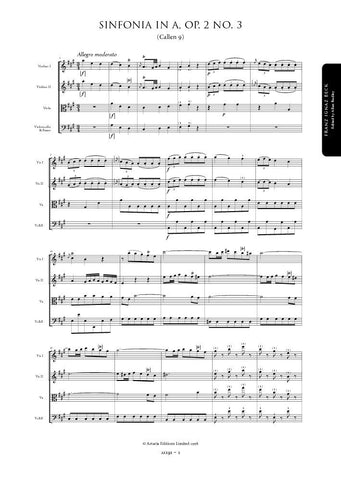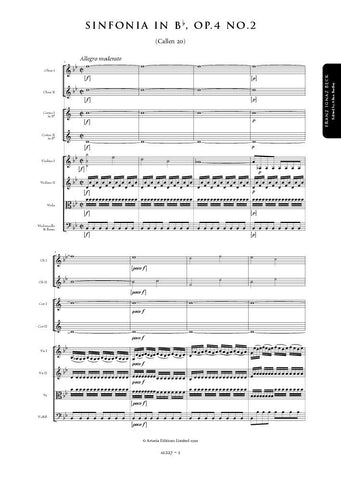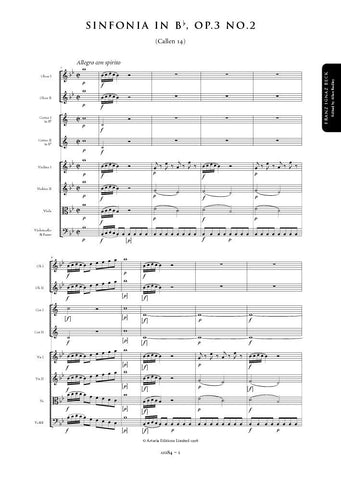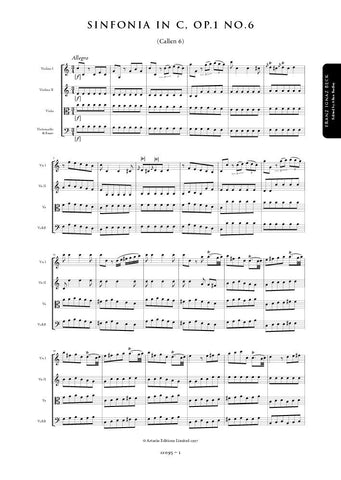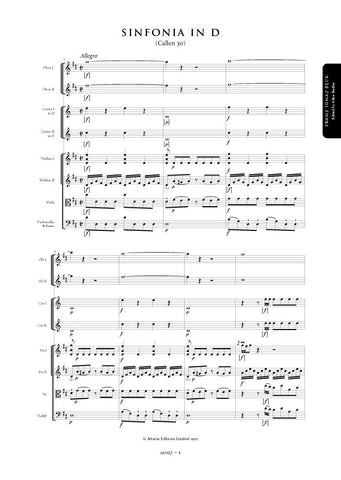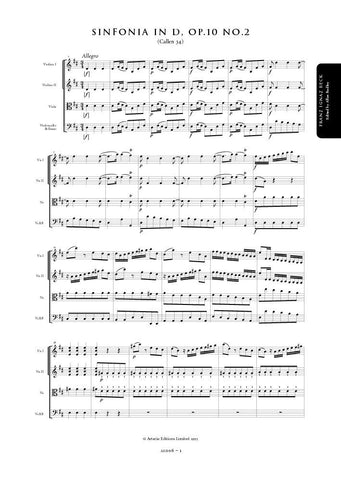Beck, Franz: Symphony in A major, Op. 1, No. 3 (Callen 3) (AE092) – sheet music
Previous Product Next Product
Description |
Beck, Franz (1734-1809)
|
||||||||||||||||||
Audio sample |
|||||||||||||||||||
Details |
The six Op.1 symphonies, published by Venier in 1758, owe a great stylistic debt to Beck's older Mannheim colleagues and in particular to Johann Stamitz and Franz Xaver Richter. The works are in some respects rather conservative, glancing back to the style of Stamitz's symphonies written in the early and middle 1740s. At the same time, however, they contain elements of the later Mannheim style especially in the flamboyant violin writing. The linear quality of Richter's style is generally absent although something of his emotional intensity can be felt in Beck's occasional employment of startling harmonic progressions. The title page of Venier's print reads 'SEI OVERTURE / A PIÚ STROMENTI / COMPOSTE / DA FRANCESCO BECK / Virtuoso di Camera di Sua / A. S. L'ELECTOR PALATINO, / & Disepolo di Gioan Stamitz. / OPERA PRIMA. / Fait Gravé par Venier...' This edition is based on a copy of the Venier print now preserved in the Rowe Music Library, Cambridge. The only major departure from the Venier text is the omission of the basso continuo figuring on the grounds that it is more likely to be the work a publisher's assistant than the composer and is rendered largely superfluous by the publication of the work in full score. Otherwise, in the absence of both the autograph score and an authentic set of parts, the edition presents as faithfully as possible the intentions of the composer as transmitted in the Venier print. The style and notation of articulation and dynamic markings have been standardised throughout, and, where missing, markings reconstructed from parallel passages. These are indicated by the use of dotted slurs or brackets where appropriate. Like most eighteenth-century sources, the Venier print is inconsistent in its notation of appoggiature; these too have been standardised to minimise confusion. Obvious wrong notes have been corrected without comment; editorial emendations with no authority from the source are placed within brackets. Allan Badley |




